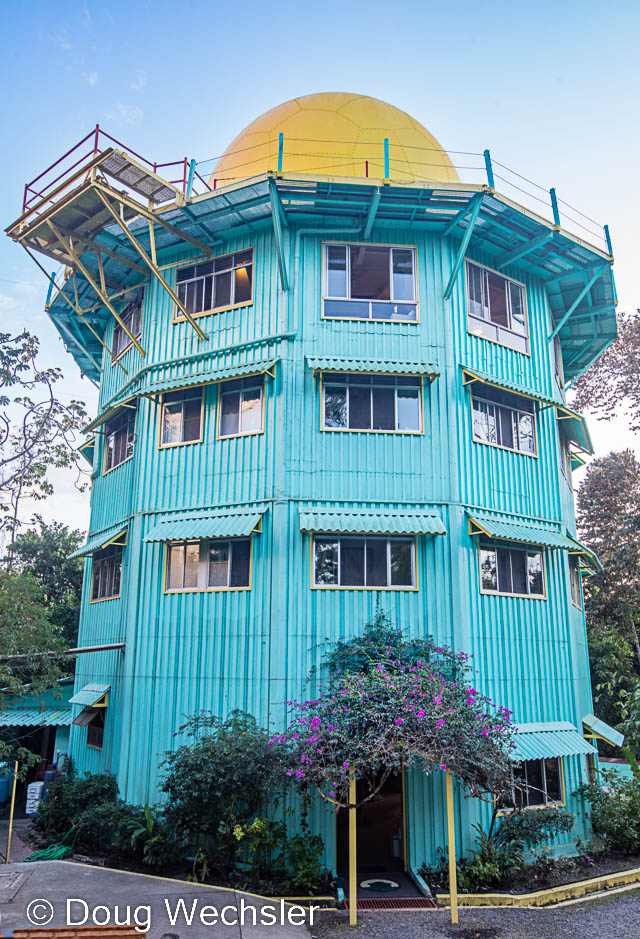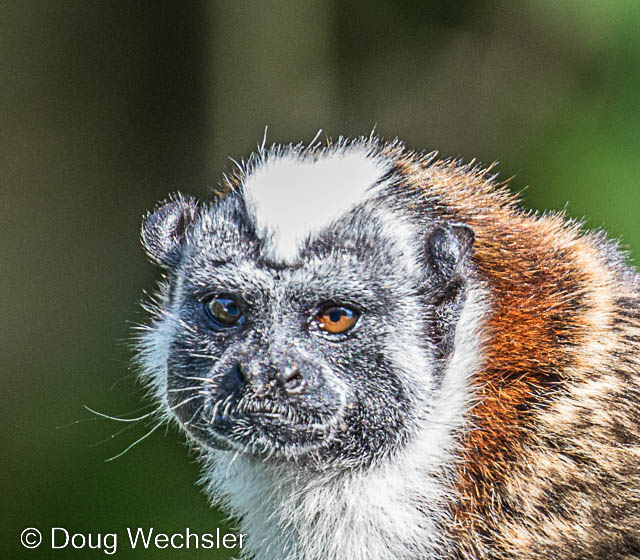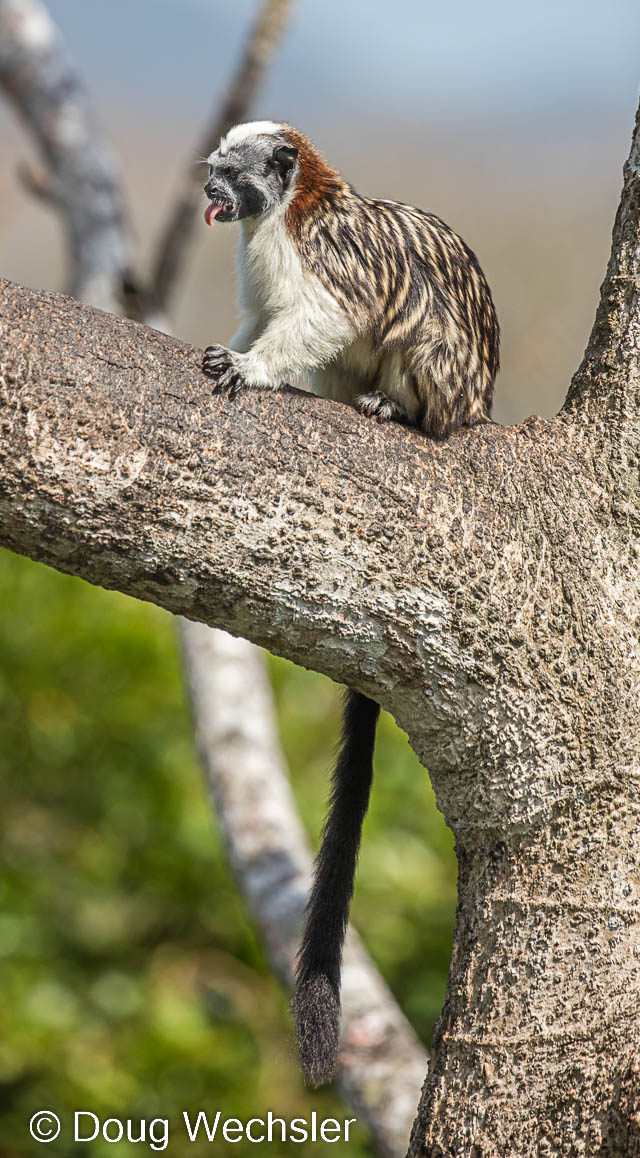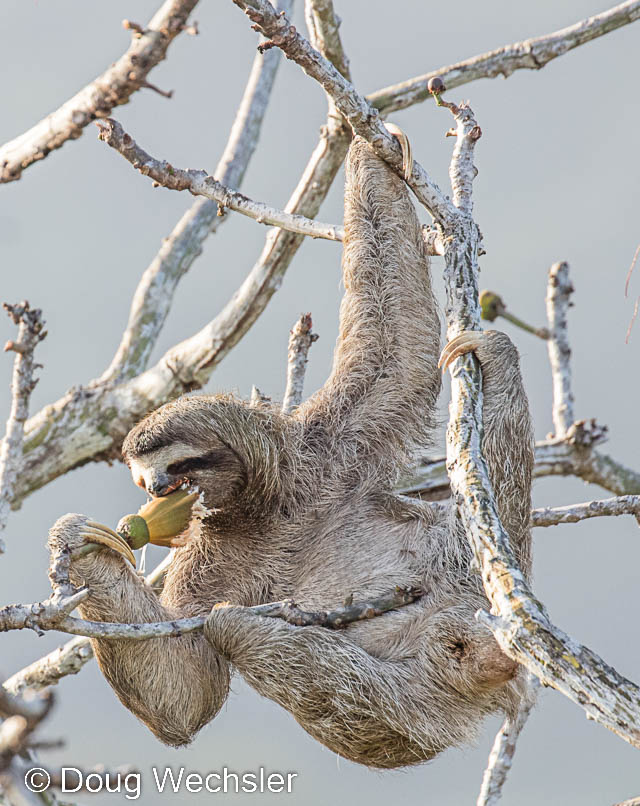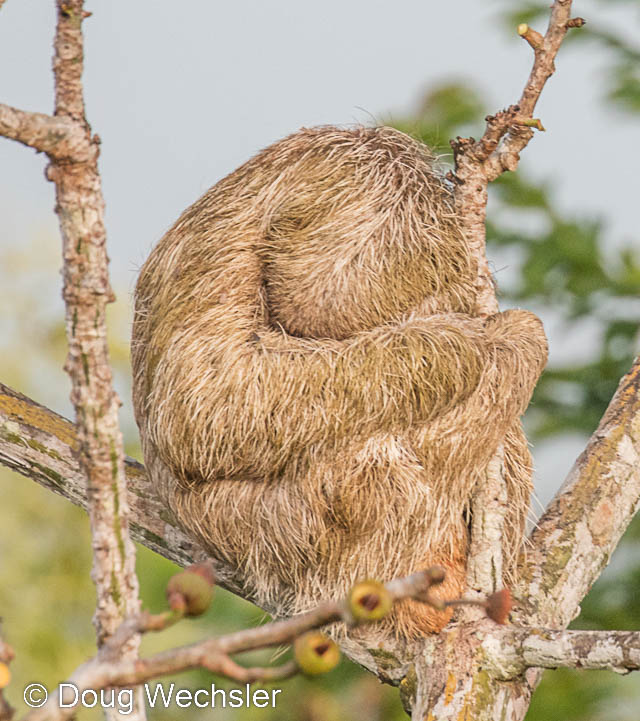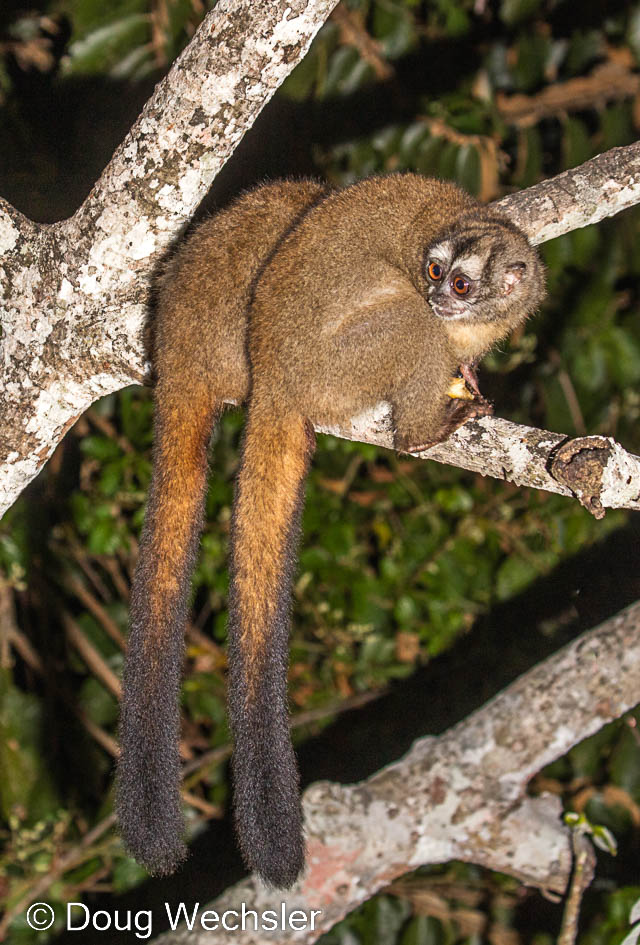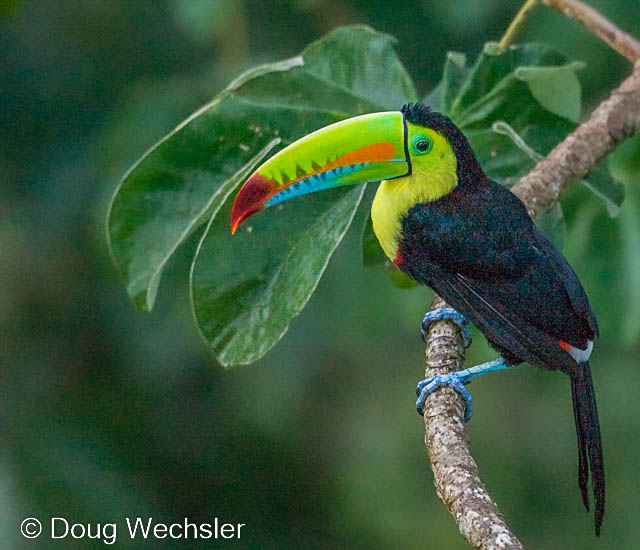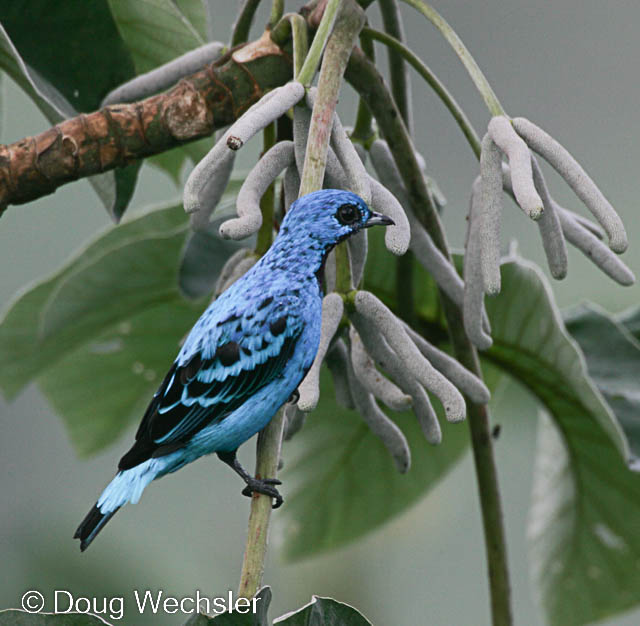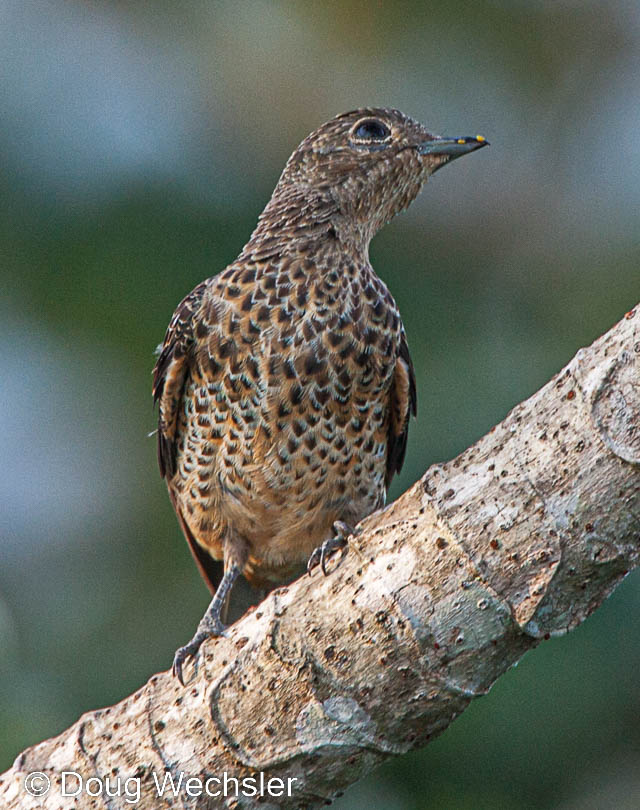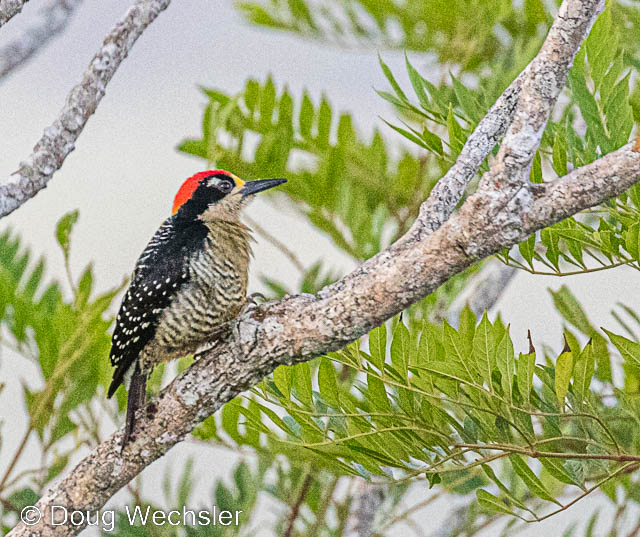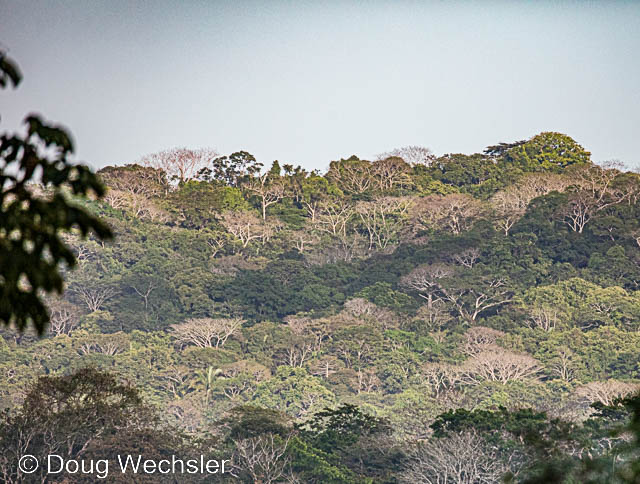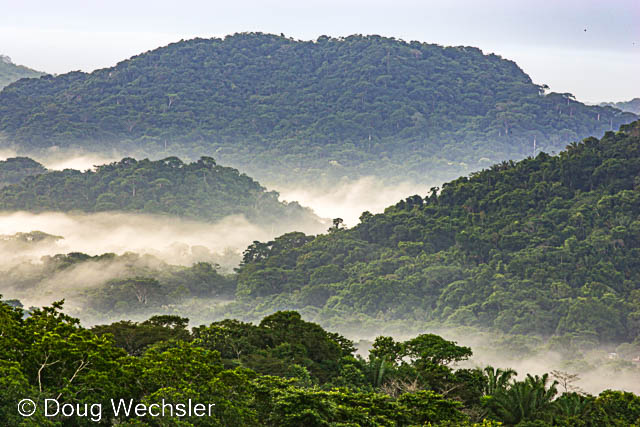Birding, monkeying, and butterflying from the Canopy Tower, a radar facility from the Cold War era in the tropical forest of Panama, is a unique experience. In addition to all manner of wildlife, you can see the Panama Canal and the skyline of Panama City. Debbie and I spent six nights there exploring natural areas close to the Canal.
The tower was built around 1963 in response to the Cuban Missile Crisis. It housed radar to be used in defense of the Panama Canal. Later it was used by the Federal Aviation Administration for air traffic control, and later still, to detect planes smuggling drugs. In 1997, Raúl Arias de Para secured a long-term lease to convert the then defunct tower into an ecotourism hotel for rainforest observation. Two year’s later the tower was open to guests and Raúl’s dream came true. More on its history and Raúl here.
Observing wildlife from the tower doesn’t require special skill. They are likely to observe you as well.
These small monkeys, Geoffroy’s Tamarins (aka marmoset) can be seen right out your window. They feed on insects and fruit, including bananas of course.
Sloths hang out in the trees within spitting distance of the observation deck atop the tower. This one is munching on the flower of a Shaving Brush Tree, Pseudobombax.
Curled into a ball of fur is a typical posture for sloths. When you eat mostly leaves, it takes a long time to digest.
Note the green alga that grows in the sloths coarse hair. The alga, Trichophilus welckeri (not wechsleri), is only known to occur on sloths. It is passed from mother to offspring in their first few weeks. It may provide the sloth with camouflage and perhaps other benefits. Moths, beetles, cockroaches and fungi also share the hairy shelter.
After dark, the night monkeys show up for bananas. These are the only nocturnal monkeys in the world.
I didn’t get to photograph toucans or cotingas at the tower on this visit, but here are examples from my previous visit 18 years ago. Keel-billed Toucan, the quintessential tropical bird, uses its over-sized, multicolored bill to reach for fruit, grab insects, or even handle venomous snakes.
A Blue Cotinga sighting is one of the rewards of birding from canopy level. Cecropia trees in fruit like this one are magnets for canopy-dwelling, fruit-eating birds.
The female Blue Cotinga won’t dazzle your eyes, but is handsome in her own way.
A noisy Black-cheeked Woodpecker rattles nearby.
On a sunny day, many species of butterflies flutter around the canopy seeking mates. This Orion Cecropian has conveniently landed on a cecropia trunk.
February is well into dry season. Many trees are deciduous and have lost their leaves.
Here is a view from the tower during wet season (taken in October).
In the next installment, we will see wildlife observed on excursions based out of the Canopy Tower.

